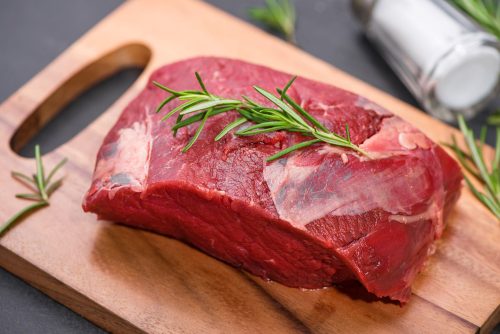How to cook the perfect Sunday roast
Katie Georgeson, Brand Manager at kitchen appliance manufacturer Stoves, shares her top tips to help you create the perfect roast.
A Guide to Cooking the Perfect Sunday Roast
When it comes to food, you can’t get more British than a traditional Sunday roast. So much so that this combination of meat, potatoes, vegetables, and gravy, is consistently voted as one of the nation’s favourite meals.
From its traditions as a post-church meal on Sundays to its modern incarnation, this great dish still brings family and friends together like no other. In this article, I’m going to share with you my top tips to help you create a beautiful and flavoursome roast.
Choosing your beef
In terms of getting that perfect taste, the most important factor is the fat. Many people tend to trim it off beforehand, but this is a mistake as a thick covering of fat helps to baste your meat and give it that tender, juicy, and more flavoursome touch. If you don’t like fat, you can always just cut it off once it’s cooked, that way you still get all that beautiful flavour.
(Another important reason to choose organic grass-fed meat, to ensure that the fat is high in omega 3s and packed full of vitamins and minerals – Simon)
In terms of the meat itself, you want to choose a piece that has a deep dark red colour with plenty of marbling throughout. These small slivers of fat running throughout the flesh of the joint contribute to the overall taste and helps the meat to retain moisture.
How to cook your beef
The first step is to allow the meat to reach room temperature before putting it in the oven. You want to cook your roast beef at a high temperature, as this will caramelise the outside, before turning the temperature down. You can also use this technique the other way around, by starting with a lower temperature and giving it a blast of heat at the end, whichever you prefer.
Generally, the lower the temperature and the longer you cook for, the tastier and more tender the joint will be. You want your thermometer to read 52°C for rare, 57°C for medium and 63°C for well-done. Once cooked, you’ll want to rest the joint for at least 10 to 20 minutes, covered in loose tin foil. This allows the moisture to redistribute itself throughout the meat, ensuring that every bite is as tender as can be.
Vegetables
When choosing the vegetables for your roast, you can go the traditional route with carrots, parsnips, potatoes, and cauliflower, or you can mix things up with sweet potatoes, aubergine, and green beans, the choice is yours. Whatever you decide, you’ll want to get those beautifully caramelized edges just right, and there are some tips to follow that can help you do just that.
You’ll want to ensure that all of your veggies are coated in oil before roasting to get that nice, crisp texture. It’s also wise to cut your veg into equal sizes to make sure they are all evenly cooked through. To get that fantastic caramelised flavour, you need to be roasting your vegetables at a minimum of 200°C.
-
 Organic Grass Fed Beef Fillet Roast 1.4Kg£109.99
Organic Grass Fed Beef Fillet Roast 1.4Kg£109.99 -
 Grass Fed Beef Rump Roast (1Kg)£39.99
Grass Fed Beef Rump Roast (1Kg)£39.99 -
 Organic Grass Fed Rib of Beef on the Bone (1.4kg)£41.99
Organic Grass Fed Rib of Beef on the Bone (1.4kg)£41.99 -
 Grass-fed Beef Brisket (1Kg)£17.99
Grass-fed Beef Brisket (1Kg)£17.99 -
 Grass Fed Beef Sirloin Roast
Grass Fed Beef Sirloin Roast
Price range: £44.99 through £110.99 -
 Grass Fed Organic Beef Roast
Grass Fed Organic Beef Roast
Price range: £19.99 through £38.99

